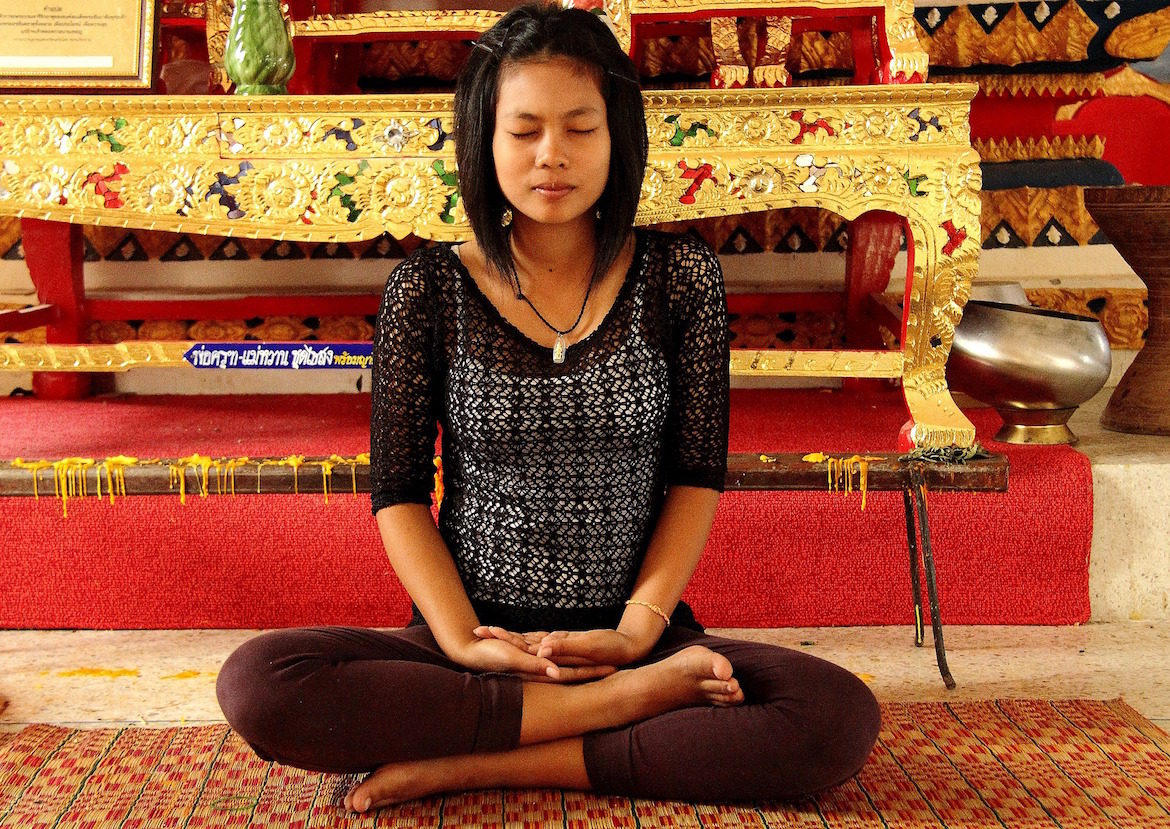Meditating
written by Anne SkyvingtonSeptember 29, 2016

What is Meditation?
“It’s what happy and successful people do,” I was told, when I first started learning about meditation and how to do it. The Dalai Lama and other Tibetan Buddhists believe that happiness is the actual goal of most people on earth. But we in the West are brought up with the idea that finding a job, buying a house, getting married and having children are what we should aim for. Yet, while aiming for these goals, and even on reaching them, quite often we feel depressed, dissatisfied, and, yes, unhappy.
Meditation has been around from time immemorial; it was first recorded in written texts from seven thousand years ago in China. While meditation has become linked mainly to Eastern cultures, it is integral to most spiritual paths, and basic to all major religions in some form or another.
Dr Ian Gawler of the Ian Gawler Foundation claimed to have been cured of cancer through meditation and dietary changes. He states that “No matter where in your life you want to see improvement, meditation can help. It does not matter what age you are, your culture or beliefs; meditation is for everyone and can provide you with great benefits, many of which have been scientifically confirmed. This simple, yet powerful mind training tool, can bring long-term improvement to your health, well-being, relationships and career.”
Modern doctors, psychologists and psychiatrists recommend “mindfulness meditation” practices as part of stress management skills. These practices are based on the same millenia old Buddhist meditation skills, often stripped of their religious connotations. Research shows that changes take place in the brains of practitioners, even after a short time utilising these methods. Nevertheless, ritual in some form or another, gives structure to these practices and encourages the formation of habits.
How to Meditate
There are many different groups offering many different meditation practices. Here is an article outlining the main different types of meditation.
Simply put, you sit with your back erect, close your eyes, focus on your breath, and practise mindfulness. It takes time and continued practice to learn how to do this easily and comfortably, without being pulled around by speedy, agitated monkey mind which refers to a person’s inability to quieten their thoughts and pacify their minds. Buddhists compare thoughts to clouds moving across the clear background of the sky.

A Simple Meditation
- Sit or lie comfortably. You may even want to invest in a meditation chair.
- Close your eyes.
- Make no effort to control the breath; simply breathe naturally.
- Focus your attention on the breath and on how the body moves with each inhalation and exhalation.
- Focusing on a special sound (om) or on a source of light, such as a candle, are other useful tools.

different types of meditationDr Ian Gawler cured of cancerhappiness linked to meditationhow to meditatethe history of meditationwhat is meditation?

